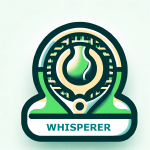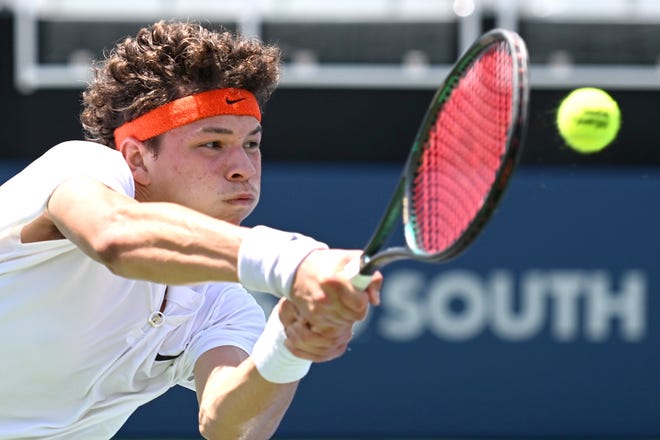Core Values that Tennis Teaches
It may be the oldest question about sports… Does tennis teach character or reveal it?
Some would answer both or even neither, but after coaching for more than 40 years now. I have come to a conclusion based on more than 65,000 hours of teaching tennis on the court.
Tennis CAN teach character, but only if it is intentional. The coach needs to have character as one of the pillars of his teaching philosophy.
Studies show that sports participation does NOT in and of itself teach character. In fact, studies show that the more time and energy athletes put in to becoming elite, that more likely they may be in justify cheating.
Just looking at the professional world of sports and you can see many examples of this happening from using illegal performance enhancing drugs as an obvious example.
Today we have a multitude of players that feel like they are failures because they don’t win as often as they think they should. A big reason is that players have been taught by peers, parents, and coaches, that winning is the ultimate goal.
Instead, we need to realize that tennis is a nearly perfect vehicle to teach players the many life lessons that are so important for all champions to learn.
Below is a list of these core values that tennis COULD teach, if the coach is intentional:
1. CHARACTER: Through the responsibilities each player has to call the lines on their side of the court, keep score accurately, and give the opponent the benefit of the doubt, tennis offers a great opportunity for players to build character.
A player’s character can also be seen in the way they keep score during a drill or even by their line calls while they drill. Good coaches can be very helpful if they can get the players to realize that their self-worth as a person has nothing to do with how well they strike a little yellow ball.
2. COURAGE: Tennis gives players the opportunity to play through tough times. The one-on-one style of competition certainly requires the guts to put it on the line. Few other sports require as much courage from their youngest athletes as tennis does in this area. Another example is when players find it necessary to confront or question someone that is cheating them.
How many times have we seen players avoid that uncomfortable job, only to wait until the match is over to tell the entire world how their opponent was the biggest cheater on the planet? Think of it, aren’t those skills the exact ones that will best serve the players in their adult life? It’s all about how you look at the situation.
Some will think this is an awful burden that no young player should have to endure, while others recognize it as a great opportunity to teach an important life lesson and skill.
3. HONESTY: Tennis is one of the only sports where the players make calls on each other’s shots. Can you imagine a Little League game where the batter calls the balls and strikes? Although this huge responsibility in the hands of immature competitors can and has caused problems, no other sport allows for the development of honesty like tennis does.
Parents and coaches can facilitate the development of this core value if they seek out opportunities to compliment players when the players get it right.
4. SPORTSMANSHIP: Like in other sports, tennis players will play opponents that are jerks and try to cheat. In the short run, this is uncomfortable for players and parents, but it does give young kids the chance to start to develop coping skills with these kinds of people.
I know many competitive junior players are mature beyond their peers in this area simply because they have had more chances to practice these skills than non-tennis players. Parents should view these episodes as opportunities and resist the urge to get involved and “save” the child.
5. INTEGRITY: More than any other sport, tennis has the potential for “retaliatory” calls because it allows for your opponent to make calls that directly affect you. There will be times when people get cheated, whether on purpose or by honest mistake. How a player reacts to these times offers the player a chance to test and prove their integrity.
Will they get even, or will they do the right thing despite the opponent’s actions? Refusing to retaliate will teach players that they should avoid situational ethics by refusing to get even “because he did it to me first”.Players that succeed in this area can have a profound sense of satisfaction even if they lose the match, but only if a coach or parent is dedicated to looking for and rewarding their successes in this area.
6. COMMITMENT: Reaching the highest level of tennis requires a great deal of commitment on the player’s part. The lessons of self-discipline and delayed gratification are great life lessons that will surely serve the player later in life.
Even within a player’s game, they will need to make decisions to try new techniques that may hurt them in the short run. Commitment to these new techniques is critical for future tennis success and teaches a valuable life lesson that players will surely benefit from as adults.
7. HUMILITY: Through competition and partaking in drill classes, players soon come to realize people do not look upon arrogance very highly. Tennis offers players the chance to learn the difference between arrogance and confidence.
Team settings and class settings are the best arenas for players to learn this. Parents and coaches can not shun their responsibility to tell players when they are acting arrogantly.
8. EXCELLENCE: I believe the practice court is the best arena to teach players to strive for excellence. Many players find it difficult to practice with the proper level of intensity after a long day at school.
These challenges are similar to the ones they will have in college, and ultimately when they enter the workforce and become parents. The ability to work hard when you don’t feel like it is a major life lesson in the area of striving for excellence.
If we can produce players that strive to excel in these areas and look at tennis as a vehicle to become a better person, then they will have learned valuable life lessons and in the process experience less stress in competition.
This is because they will no longer view the “win” as the ultimate goal. Instead, they will be aiming at a more important target. Almost every tough loss in tennis can be a victory if the player is tuned into the life lessons that tennis offers.
Jorge Capestany, USPTA Master Professional



 Credit…Corey Sipkin/Agence France-Presse — Getty Images
Credit…Corey Sipkin/Agence France-Presse — Getty Images
